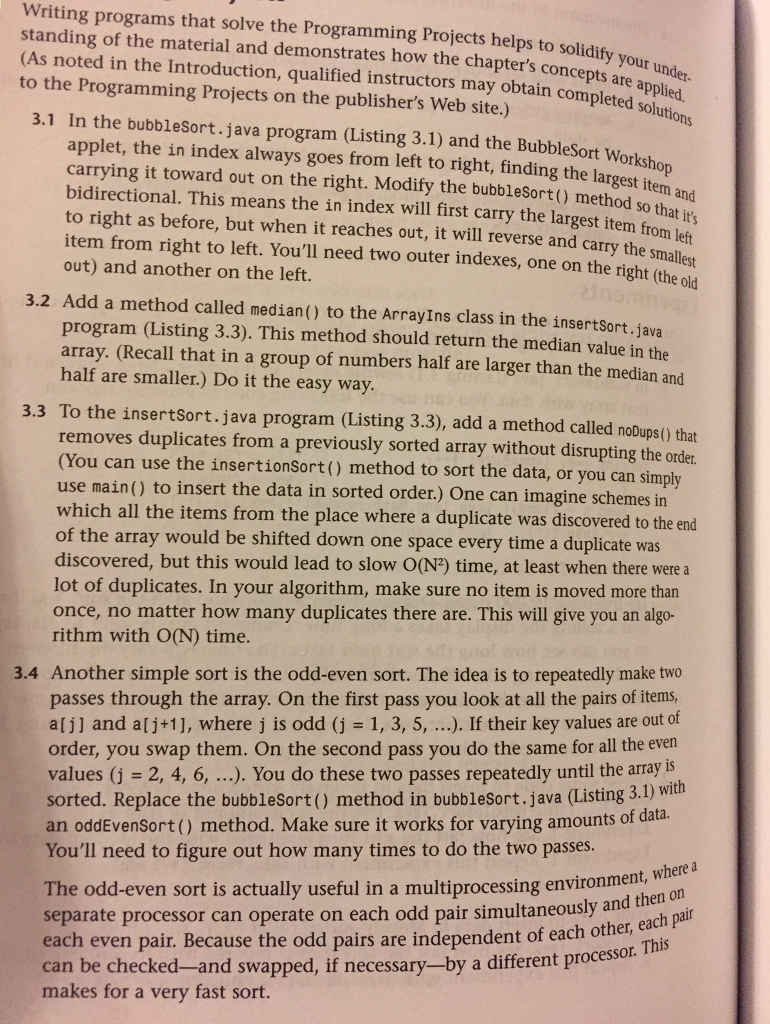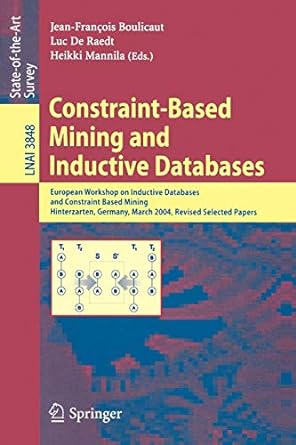Answered step by step
Verified Expert Solution
Question
1 Approved Answer
See problem 3.4 on page 112. You are going to implement the odd-even sort in the C language not java. You don't need to do
See problem 3.4 on page 112. You are going to implement the odd-even sort in the C language not java. You don't need to do any of his instructions concerning listing 3.1. The task will be to sort a file using a single command line file. HOWEVER, I don't want to see the whole sorted file, so the output will simply be any of the ints in the sorted file (that I may specify--see below) when sorted from lowest to highest). So I should be able to query and REPEATEDLY ask for a number in a certain index until I ask for -1 which indicates an invalid index and the program should stop. So, for example, if the index specified is 3 then I want the number in index 3 (which will be the 4th smallest number). Next, I might specify 500 or whatever. Eventually I specify -1 and the program stops. For THIS program I am am going to use gcc on Osprey with a single command line file that will have a very large number of random ints (at least 1000, perhaps significantly more and they might be positive, negative , or zero). The very first number in the file, however, is not actual data, but rather it specifies the number of numbers after it. So you will want to calloc an array to store the data so that the array is the correct size. You can google calloc is you have never used it or you can find some examples in the C book or my website under one of the tabs for C. DO NOT STORE THE VERY FIRST NUMBER IN THE ARRAY. ONLY STORE THE NUMBERS AFTER THAT AND OF COURSE THE SMALLEST NUMBER WILL EVENTUALLY BE STORED IN INDEX 0 (NOT 1). BE CAREFUL WHEN PROGRAMMING AS THERE APPEARS TO BE AN ERROR IN HIS LOGIC. I BELIEVE HE IGNORES THE NUMBER IN INDEX 0. The number of ints on a single line is unknown; there might be just one or there might be many. They will be separated by "white space"...blanks, tabs, or newlines.

Step by Step Solution
There are 3 Steps involved in it
Step: 1

Get Instant Access to Expert-Tailored Solutions
See step-by-step solutions with expert insights and AI powered tools for academic success
Step: 2

Step: 3

Ace Your Homework with AI
Get the answers you need in no time with our AI-driven, step-by-step assistance
Get Started


